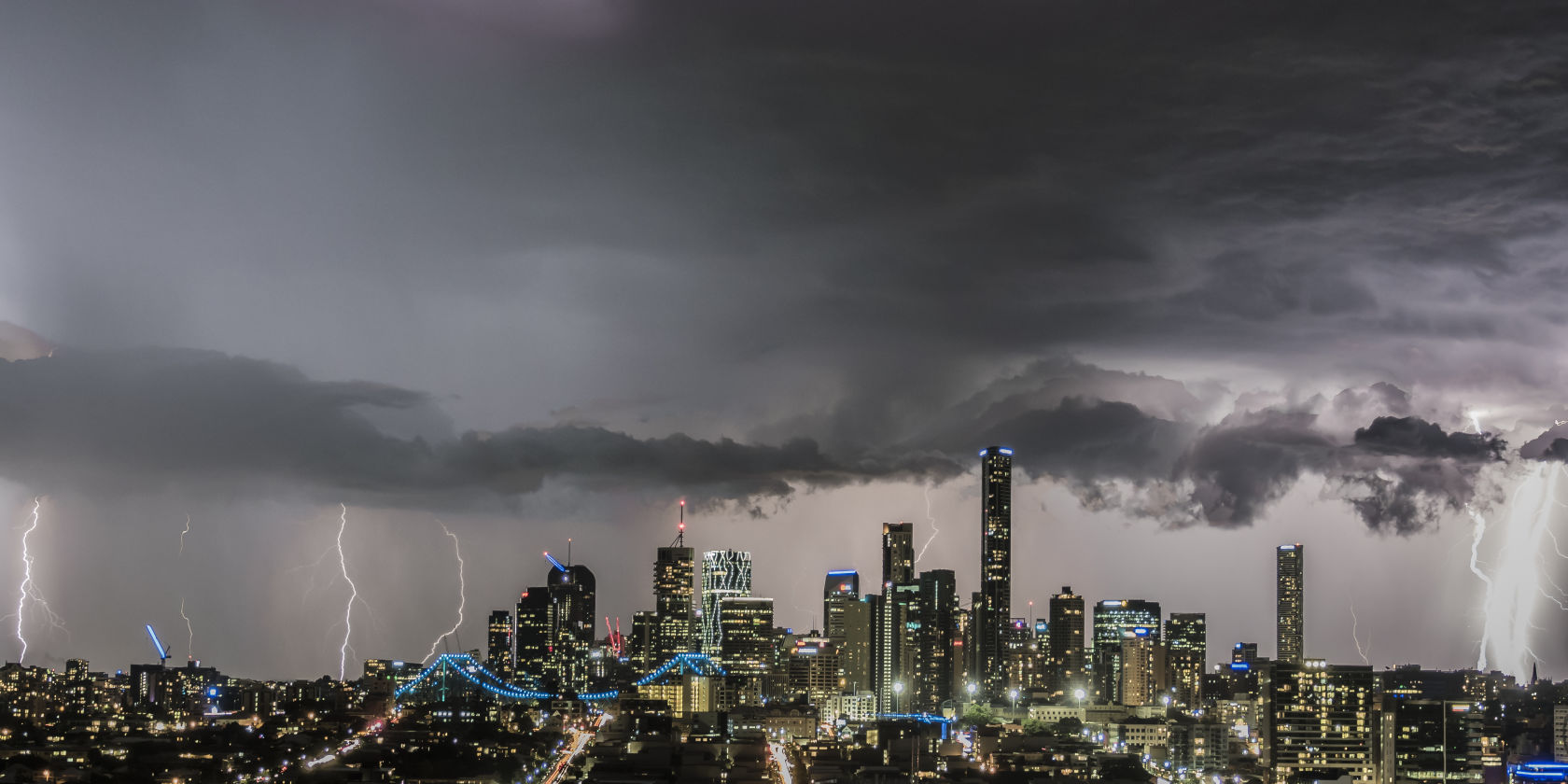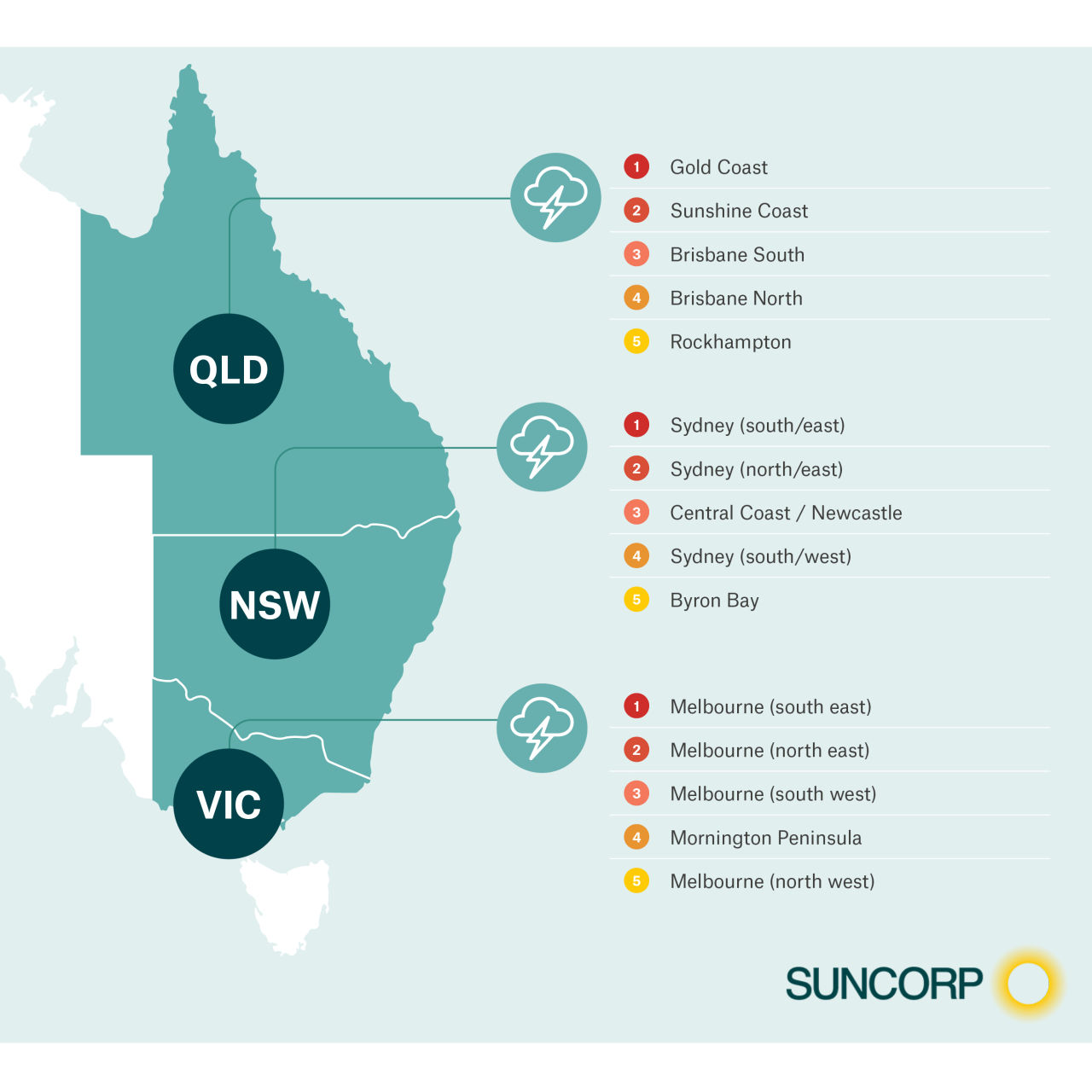Storm at-risk areas revealed as La Niña rains on spring
With a wetter than usual spring well and truly underway, new data from Suncorp is helping to identify Australia’s most at-risk areas.
Share

New data from Suncorp Group’s brands including Suncorp, GIO and AAMI has revealed the worst storm-affected regions in Queensland, New South Wales and Victoria from the past year.
The data has been used to educate home owners on how they can prepare for the upcoming natural disaster season, drawing on our partnerships with the State Emergency Service in Queensland and Victoria.
Suncorp Chief Operating Officer Paul Smeaton said: “We’ve seen the devastating impacts of storms, floods and cyclones, and we know what can be done to help protect homes and families.
“Our research shows even small-scale storms can have a big impact, so we’re hoping to encourage households, businesses and communities to get ready and undertake home maintenance and preparation now – because waiting until a storm is bearing down is just too late.”
#Top tips to prepare
Check insurance policies are current and adequate
Make a home emergency plan and have an emergency kit
Clear your backyard and gutters, trim trees and overhanging branches
Across the three states, our capital cities were among the worst affected for storm damage. Outside of the capital cities, Rockhampton, Toowoomba, Townsville and the Whitsundays featured in the top ten Queensland hotspots, while the Central Coast, Newcastle and Byron Bay were hotspots in NSW and the Mornington Peninsula in Victoria.
In Queensland, Suncorp has also partnered with rugby league legend Johnathan Thurston to launch the Suncorp Storm Score, a community challenge to help home owners prepare wih activities tailored to your region.
Queenslanders can access the Suncorp Storm Score community challenge on their smartphone at stormscore.suncorp.com.au.
#Queensland's storm hotspots (July 2019 – June 2020)
01
Gold Coast
3,857 home claims
Suburbs: Helensvale, Southport, Labrador, Runaway Bay, Hope Island
02
Sunshine Coast
3,770 home claims
Suburbs: Glasshouse Mountains, Caloundra West, Gympie, Little Mountain, Palmview
03
Brisbane South
2,832 home claims
Suburbs: Forest Lake, Coorparoo, Cleveland, Greenslopes, Alexandra Hills
04
Brisbane North
1,724 home claims
Suburbs: The Gap, Kenmore, Chermside West, Albany Creek, Ashgrove
05
Rockhampton
1,444 home claims
Suburbs: Yeppoon, Frenchville, Berserker, Norman Gardens, The Range
#NSW's storm hotspots (July 2019 – June 2020)
01
Sydney (south-east)
8,369 home claims
Suburbs: Engadine, Caringbah (South), Miranda, Maroubra, Dover Heights
02
Sydney (north-east)
5,892 home claims
Suburbs: Frenchs Forest, Mosman, St Ives, Castle Hill, Wahroonga
03
Central Coast/Newcastle
3,870 home claims
Suburbs: Umina Beach, Terrigal, Wamberal, Berkeley Vale, Chittaway Bay
04
Sydney (south-west)
2,235 home claims
Suburbs: Glenmore Park, Prestons, Harrington Park, West Hoxton, Casula
05
Byron Bay
1,632 home claims
Suburbs: Bonora Point, Inverell, Tenterfield, Kingscliff, Grafton
#Victoria's storm hotspots (July 2019 – June 2020)
01
Melbourne (south-east)
8,128 home claims
Suburbs: Glen Iris, Malvern East, Camberwell, Caulfield North, Brighton
02
Melbourne (north-east)
3,156 home claims
Suburbs: Templestowe, Warrandyte, Doncaster East, North Warrandyte, Mill Park
03
Melbourne (south-west)
2,016 home claims
Suburbs: Taylors Lakes, Werribee, Hillside, Point Cook, St Albans
04
Mornington Peninsula
1,455 home claims
Suburbs: Pakenham, Mornington, Mount Martha, Mount Eliza, Frankston
05
Melbourne (north-west)
1,043 home claims
Suburbs: Craigieburn, Sunbury, Keilor East, Greenvale, Essendon




